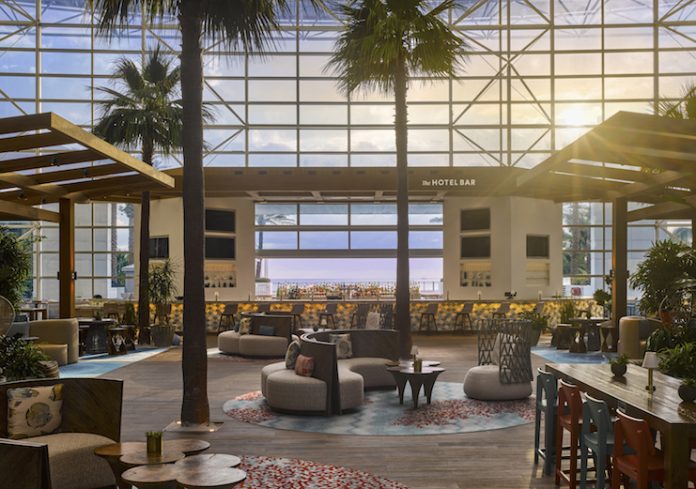
Big hotel atriums from the big-hair 80s can be a sore spot for hoteliers today as guests crave more intimate, human-scale environments. Those colossal, space-frame-enclosed spaces that once wowed guests with their grandeur now leave them feeling cold and uncomfortable. Increasingly, guests are leaving the lobby in search of character-rich environments and authentic local bites to populate their Instagram feeds.
Still, there’s something iconic about those monumental atriums. At their best, they give a feeling of space and light, and a visual link to the exterior environment. How can owners modernize those enormous spaces for today’s guest?
1Get Rid of Dated Elements
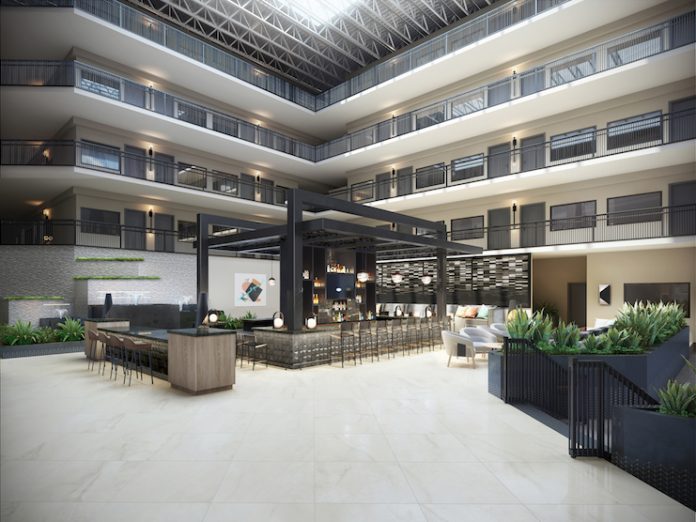
Water features are the first thing to go. There’s a reason fountains are popular in giant atriums—they help mask the noise transmitted to the rooms above. But there are other ways to mask sound that don’t make the space feel like a shopping mall. Removing water features transforms the vibe and frees up the entire space to be reimagined.
The entry experience can immediately date a space as well, especially when it comes to those big, Tuscan-inspired front desks. Today’s guest wants to connect with what is special about the locale and not be hit over the head with a prototypical look. Move the front desk off to the side, and give it a more local flavor to draw guests in.
As guests seek more meals outside of the hotel, big buffets and three-course restaurants have become overkill. Instead, think grab-and-go options with healthy bites, a bar with a limited lunch and dinner menu, and a cozy breakfast place that caters to the brunch crowd.
2Fill in the Floor
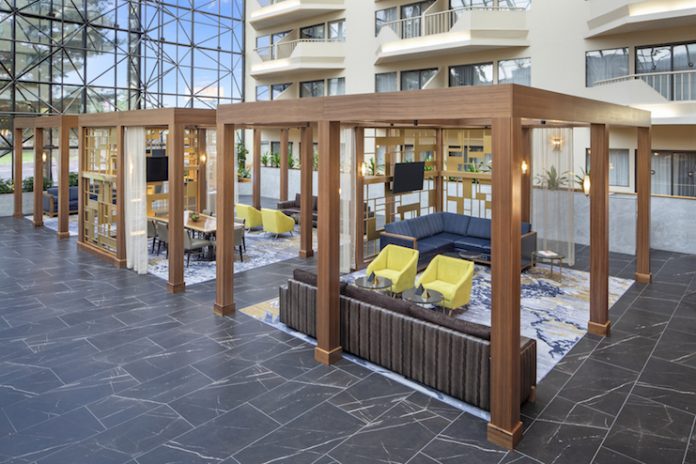
Many big atriums were designed pre-ADA, with floors that step up and down throughout the floor plate. This is a headache for anyone with luggage and makes wayfinding difficult. Filling in the floor by raising low areas makes the whole space more accessible and inviting for guests. The filled-in spaces also create a new place to hide ductwork, plumbing, and electrical wires, which will be important when adding new amenities.
3Bring the Ceiling Down
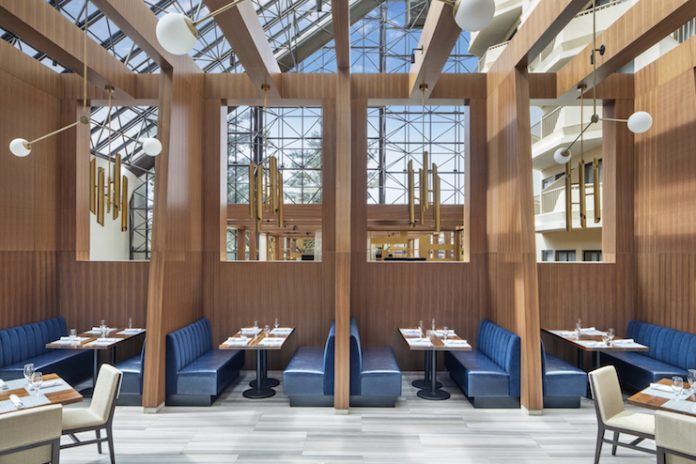
Without bringing down the actual height of the ceiling, hotel owners can lower its perceived height, breaking it down to an intimate, more human scale.
The trick is to create a series of “rooms within a room.” Cabanas, canopies, and trellis-like clouds above dining areas create micro-environments for guests. They should feel private and provide a sense of separation from the guestrooms above. Custom lighting can create micro-environments that help differentiate the smaller spaces and vary the ambiance throughout the atrium.
4Add New Amenities
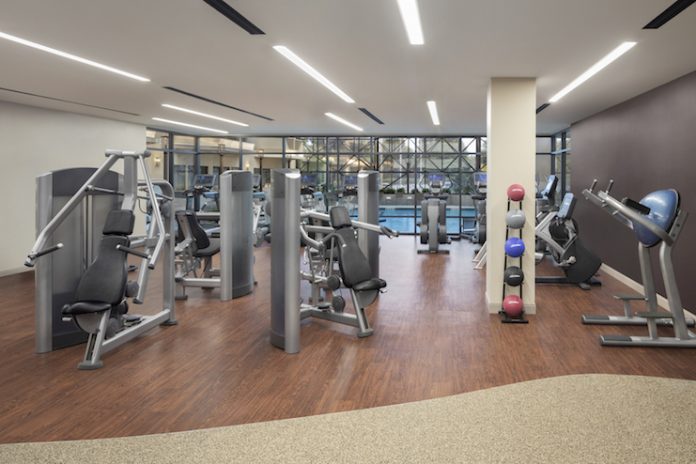
To truly transform a space, rethink the program and bring amenities that were previously pigeonholed on different floors. Fitness is now a front-and-center amenity and should be on the ground floor, connecting guests immediately to a culture of wellness. The owner’s lounge belongs in the atrium, too, where it can be visible to every guest and drive interest in loyalty programs.
5Pay Attention to Climate Control
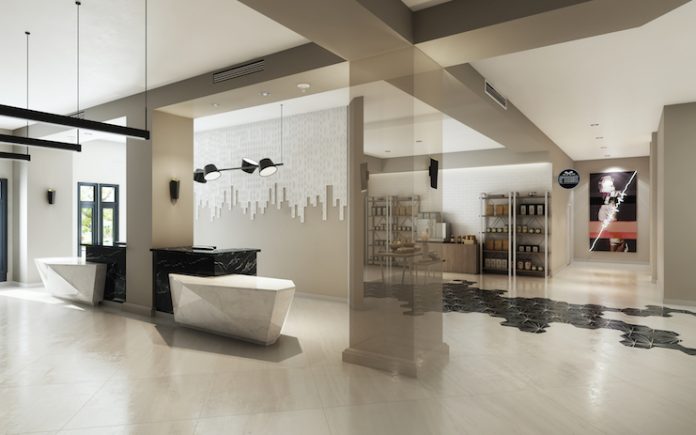
When the atrium is divided into more intimate spaces, it’s important to consider how the new structures will change air flow and affect guest comfort. The big, overhead ducts that worked before might not anymore. Instead, varied ceiling levels calls for a variety of heating and cooling solutions. Creating clouds and filling in floors really come in handy for hiding new ductwork, rerouting plumbing, and adding power to furniture for guests to charge devices.
6Budget Smart for FF&E

Huge spaces often stretch a hotel’s FF&E budget. The space should feel opulent, not empty. Try enlarging the scale of furniture. Oversized couches, lounge seating, and banquettes can make an open area feel full. Move seating away from the wall, where it takes up less space, and toward the center of the room. Reorient long tables diagonally to expand their footprint. And diversify—create different zones of seating for different uses, rather than a featureless expanse of four-tops.
Transforming a large, overwhelming space into something modern and attractive requires bold moves. Removing the fountain or filling in the floor takes a good chunk of budget, but the payoff is incredible—offering a completely different way of seeing and experiencing the space. For owners willing to make the commitment, that outdated atrium can become a guest magnet.











